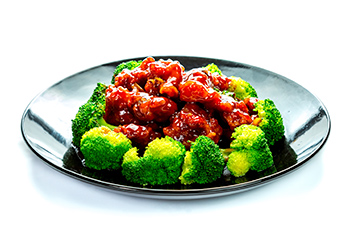Induction cooking is a cleaner and more sustainable way of cooking compared with using traditional gas or infrared electric burners. Operating at between 85 percent and 95 percent efficiency, depending on the unit, induction continues to be among the most energy-efficient heat sources available. Foodservice operators use these fast-heating appliances to prepare or hold food.
 Induction cooking also offers safe operation since the units do not use open flames and their surfaces do not get heated. These features make induction a popular option for operations where flame safety is an issue, such as hospitals, schools, nursing homes and airports. Ranges that utilize this technology are ideal for a variety of applications, including boiling, cooking, reducing, sautéing, grilling, searing and holding.
Induction cooking also offers safe operation since the units do not use open flames and their surfaces do not get heated. These features make induction a popular option for operations where flame safety is an issue, such as hospitals, schools, nursing homes and airports. Ranges that utilize this technology are ideal for a variety of applications, including boiling, cooking, reducing, sautéing, grilling, searing and holding.
All induction units have three basic components. Sensors that read pan temperatures resident under the glass surface. A copper coil creates a magnetic field, while a control board with a central processing unit (CPU) controls all the inputs and outputs of the unit.
Most induction units come with a rotary switch that sets the power level. Many manufacturers also offer temperature control settings, but this feature’s reliability depends on the type of pan and quantity of sensors used.
Foodservice operators can choose from countertop and drop-in induction units and single and double-hob models, which offer a front-to-back or side-by-side configuration. These come with the more familiar flat-top cooking hotplates or as a round bowl wok unit. The variety of functions includes low power warming, wok ranges, and single-, double- and four-coil units. There are griddle top models and hidden warmers to heat through the countertop.
Operators can choose from a vast array of cooktops and power options, including 450-watt warming units up to 10 kW stockpot versions. Units up to 1,800 watts generally utilize 110/120 volt power, while those above 1,800 watts typically use 208- or 220-volt circuits. Lower wattages up to 1,500 are ideal for food warming. Units ranging from 1,800 to 2,500 are better suited for breakfast preparation, while 3,500 watts and higher induction ranges are geared for more extensive commercial cooking. Higher wattage ranges also are used with 60-quart stockpot applications.
Single-hob induction ranges typically measure 13 to 15 inches wide, 15 to 17 inches deep and 3½ to 5 inches tall. Double units may be roughly 27 to 30 inches deep. The hobs generally will hold a 14-inch-wide vessel but these can be wider than the actual range. Typical stockpot capacities range from 24 to 40 quarts but can be larger. High-powered induction ranges that must accommodate stockpots and braising pans will tend to increase in size with power level.
Exterior construction ranges from plastic or aluminum housings with tempered glass tops at the low end to heavy-duty stainless steel housings with ceramic-glass composite tops, which tend to be more costly.
Standard features include empty pan protection and over-heating limiters. Some units have the ability to adjust to varying cookware, voltages and electrical cycles. Manufacturers may offer either control knobs or touchpad operation. Control panels that rely on cooking levels to select temperatures generally offer between 20 and 100 settings. The latest models have leveling feet to adjust to uneven tabletops.
Not many options are available for induction ranges. Some manufacturers offer various induction pans that work well with specific units as optional accessories.
Induction units are constantly being redesigned for affordability, greater control and increased durability.










